Rayna Loos
Year of birth: I was born in 1999.
Where do you live: I live in St. Petersburg, Florida.
Your education: I have a Bachelor’s of Science in Marine Science, concentrated in Marine Biology, from Eckerd College.
Describe your art in three words: Three words I would use to describe my art are whimsical, vibrant, and earthly.
Your discipline: My disciplines are marine science and art.
Website | Instagram
Your artwork often features vibrant depictions of marine life. How has your background in marine science influenced your approach to art?
Throughout many labs during my time in college, we would draw diagrams of the subjects we were working on/studying and that was always one of my favorite ways of learning. For a while I viewed these drawn diagrams simply as notes for my science class and never made the connection to art and how I could actually really utilize my art skills and go further with scientific illustrations. It actually wasn’t until the Art Meets Science Workshop I attended when I realized what scientific illustration is and that artists will create these illustrations to be utilized in the science field. At this point my background in marine science influences how I approach art by allowing me to utilize my artistic skills to learn more about a subject in scientific terms. I am not just creating these pieces because they’re beautiful (however, that’s definitely a factor) I create these pieces to learn. There is a lot of planning that goes on before the painting process like finding accurate reference photos, choosing accurate colors, and then setting up the composition of my painting. It is almost similar to the scientific method. Currently I am working on two separate projects consisting of scientific illustrations, a collection of Southwest Florida Seashell illustrations and a working Manatee Necropsy Illustration which is still in the early stages.
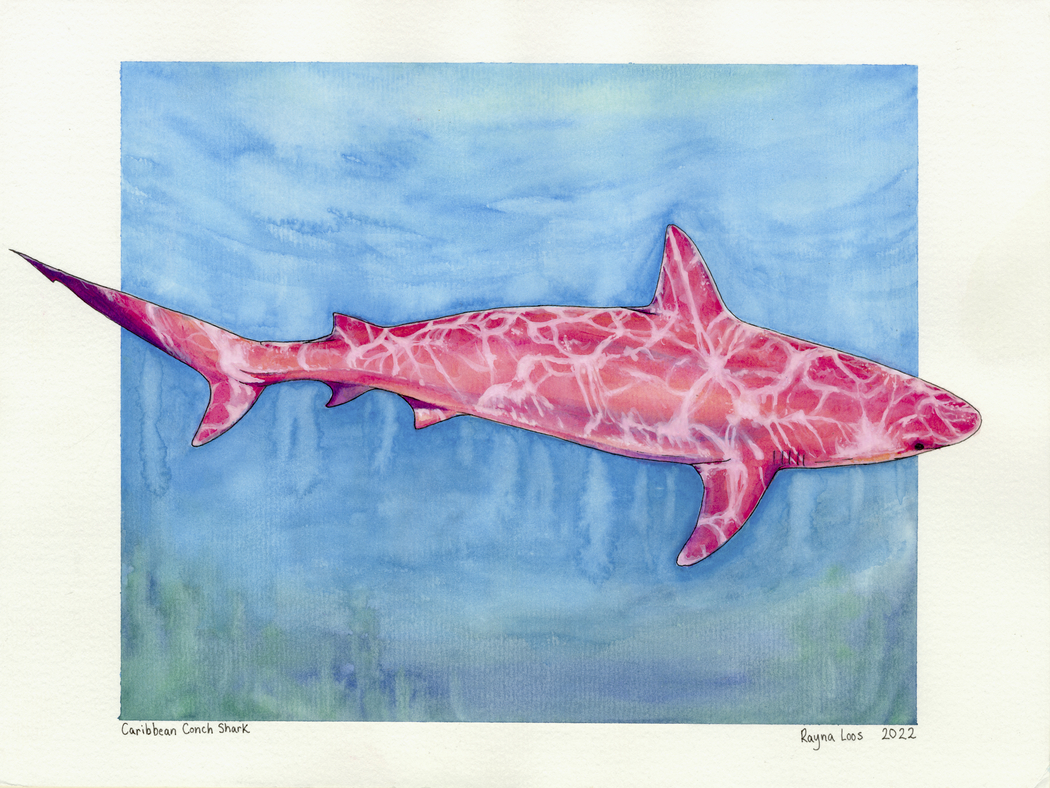 Rayna Loos | Caribbean Conch Shark | 2022
Rayna Loos | Caribbean Conch Shark | 2022
Can you tell us more about the Art Meets Science workshop at the Bimini Shark Lab? How did that experience change the direction of your artistic journey?
The Art Meets Science workshop was hosted at the Bimini Biological Field Station, AKA the Bimini Shark Lab, for a week, curated by Rosie’s Collective LLC and Chelle Blais and taught by Francesca Page. During that week a group of like-minded ocean loving artists and artistic scientists came together for the most amazing experiences we could’ve imagined. Each morning we would go out on a new adventure with species of elasmobranchs and spend time observing and sketching them, like swimming through mangrove tunnels to find a secret lemon shark nursery, taking a boat out to an island surrounded by southern stingrays, or, my personal favorite, swimming with a 13-foot long Great Hammerhead Shark named Gaia. Along with these expeditions we would get to listen to lectures by all the incredible scientists conducting research at the Shark Lab and learn more about all the species we were observing. Each afternoon, Francesca Page would have a new art lesson for us and would give us assignments like doing really quick brush pen sketches or playing around with color combinations. The art lessons focused on watercolor, which helped my watercolor skills improve greatly, but I was also able to take those lessons to other mediums like acrylic paint. This workshop not only gave me knowledge, but also a community, a community of other artists and scientists like me that I still keep in touch with to this day. That workshop completely changed the focus of my art and how I make art, it bridged the gap between my science and art background. I hope to return to Bimini one day and create even more art inspired by the wildlife of that beautiful island. The pieces that I created while attending the Art Meets Science workshop are Gaia and an illustration of a blacktip reef shark, but after the trip I painted many pieces inspired by the the wildlife we saw like Caribbean Conch Shark, Photobomb, Gaia Among the Moon and Stars, and Resilience, all which can be seen in my portfolio.
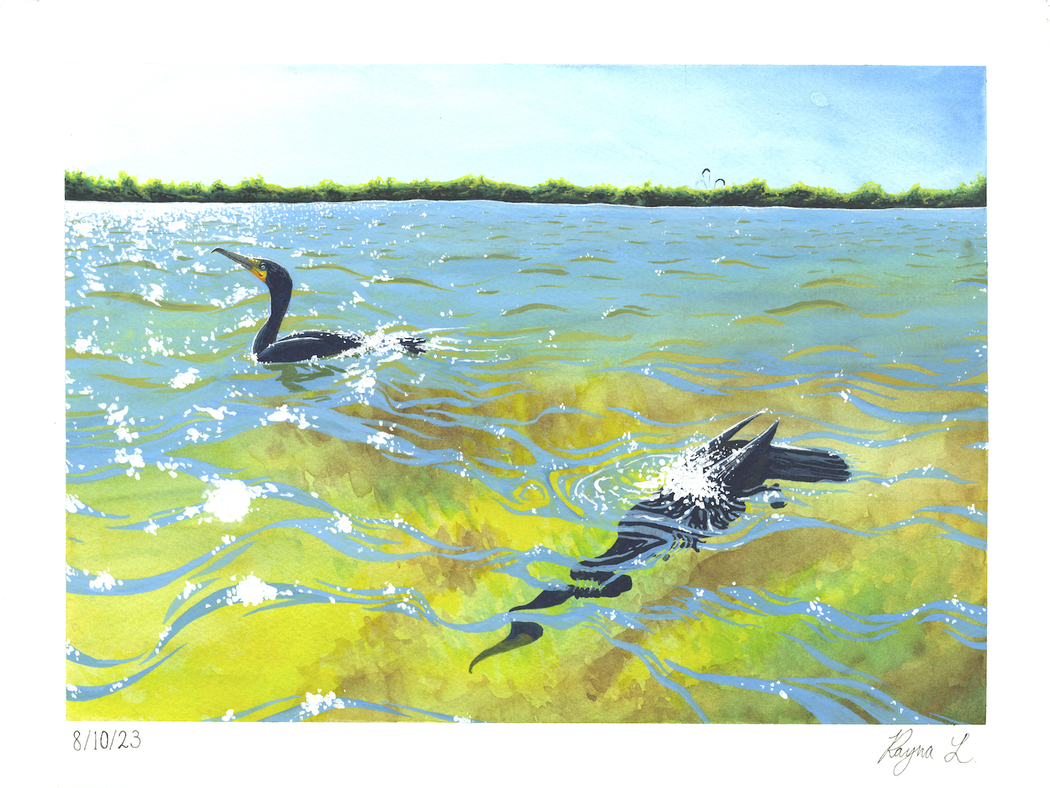 Rayna Loos | The Cormorants | 2023
Rayna Loos | The Cormorants | 2023
How do you balance your roles as both a scientist and an artist? Do you find that one discipline informs or inspires the other?
I think both of my disciplines inform and inspire the other, it’s amazing how much science and art go hand in hand. Thanks to my artistic background I have an attention to detail, and can use my creativity to solve problems. From my scientific background I have critical thinking and scientific knowledge that I used in my painting process. I balance the two by finding ways to combine them, which is why the subjects I study in the world of science are what inspire my paintings, and I use my artistic skills to create diagrams and scientific illustrations to be used in the world of science. The artist in me gets inspired by the work of other scientists and makes me want to create art based on their findings, and the scientist in me gets fascinated by artists and their art processes and figuring out how to create a piece like them. I think science is so beautiful and I’m grateful to have that background to mix in with my art and make me stand out as an artist.
Your pieces like “Caribbean Conch Shark” and “Sea Angel” show a unique combination of realism and fantasy. What inspires you to blend these two styles?
A lot of my early art was inspired by fantasy and that is where I first started to grow my roots. As much as I love doing scientific illustration and depicting accurate subjects, at the same time I don’t want to replicate exactly what you see in nature because that’s already been done. I want to represent certain subjects in the way that I see them to make my pieces unique to me as an artist. Fantasy gives me this freedom, and it’s a way to heal my inner child who just so happens to love bright colors and glitter. This is also a way for me to give these real animals a touch of magic to represent how magical they truly are just for existing in their own form. For Caribbean Conch Shark, I did this by painting the shark pink, but besides color the entire piece is an accurate depiction of a Caribbean Reef Shark. The pink is because I was inspired by all the pink around Bimini like pink sunsets, pink queen conchs, pink houses, and since we spent so much time with sharks I loved imagining a pink shark. For Sea Angel I added the fantasy aspect by saturating its natural colors to make it more vibrant. Sea Angels are also typically found in dark waters, but I didn’t want a plain black background so I added a bunch of glitter which gave it a starry night-sky look.
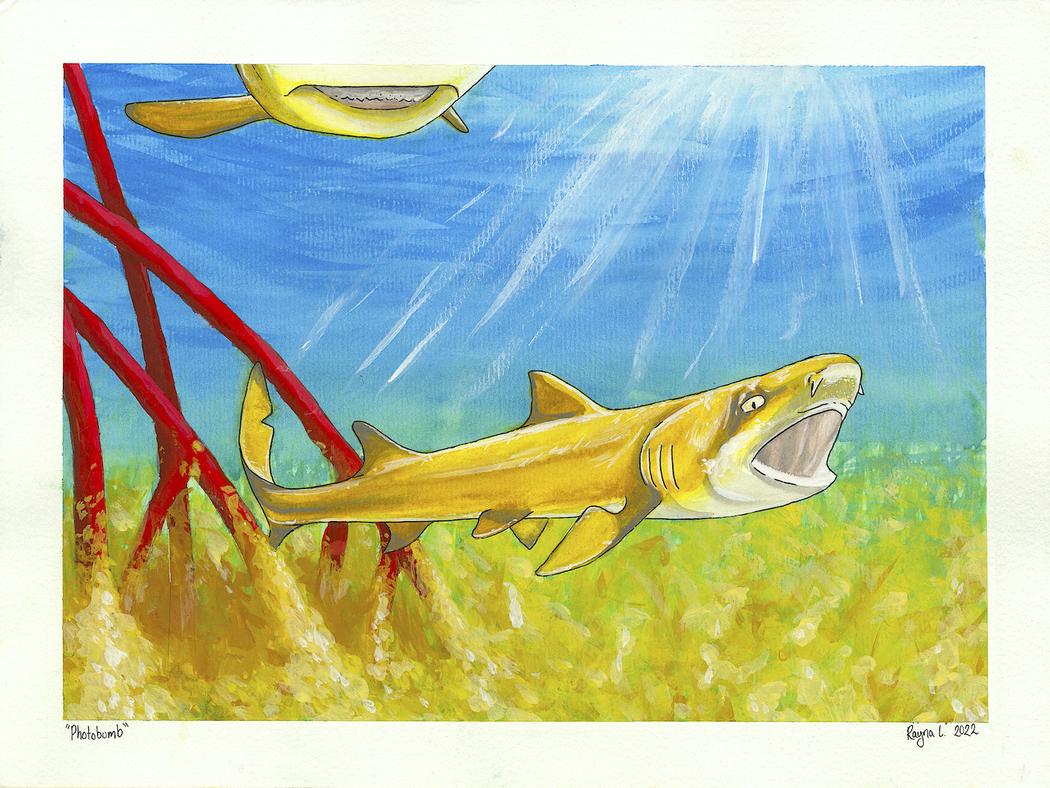 Rayna Loos | Photobomb | 2022
Rayna Loos | Photobomb | 2022
What role do you hope your art will play in marine conservation and education?
I hope my art can be used as an accessible tool for education and outreach pertaining to marine science and conservation. Oftentimes lack of knowledge in conservation comes from lack of understanding the wildlife and ecosystems we are trying to conserve. Not everyone has access to wildlife and these natural spaces so art is a way for them to observe without actually being there. On top of that, art gives us artists the freedom of imagination, so if we don’t have access to seeing certain wildlife, we can use reference photos to create our own experience. For example, my painting, Tree of Life, is not something I saw with my own eyes but rather a collection of experiences I have had in Mangrove forests. Tree of Life shows the audience the connections that many species have with each other and the Red Mangrove Tree and the importance of conserving Red Mangrove Forests. Photobomb features two baby Lemon Sharks, one swimming through the roots of a Red Mangrove and the other bumping into my camera, that I witnessed in a secret nursery in South Bimini and the purpose of this painting is to allow the audience to relate to silly behaviors even a baby shark can have in their playground and why we need to conserve Red Mangrove forests in order to protect this species of shark. Resilience shows how much human development has affected nature and wildlife, with a hermit crab using a bullet casing as a shell. My paintings can be used to teach the viewers about the morphology, behaviors, ecosystems, and so many other details of wildlife to further help the viewer understand the need for conservation. In the future I hope to create more scientific illustration posters and working illustrations for my audience to experience and learn about things they may have never had access to.
Living in St. Petersburg, Florida, how does your environment influence your work?
St. Pete is also known as Sunshine City and it is full of such beautiful wildlife and views, plus we have some of the best beaches in the United States. All these factors keep me curious and always exploring the outdoors which is where I find the most inspiration. Living in Florida means my hobbies have to include paddle-boarding and hiking, and I always take my sketchbook with me to all my expeditions and try to take moments to sketch my surroundings, en plein air. I find most inspiration out on these adventures and often take a lot of reference photos for future paintings when I’m out exploring. I am also a shell collector and my time shelling inspired my Southwest Florida Seashell illustration project. Plus, my city is full of artists and the arts. We have so many galleries, art spaces, and murals all around the city, and the art community here is so beautiful, diverse, and supportive. I am grateful to live in such a beautiful place with a vibrant artistic community.
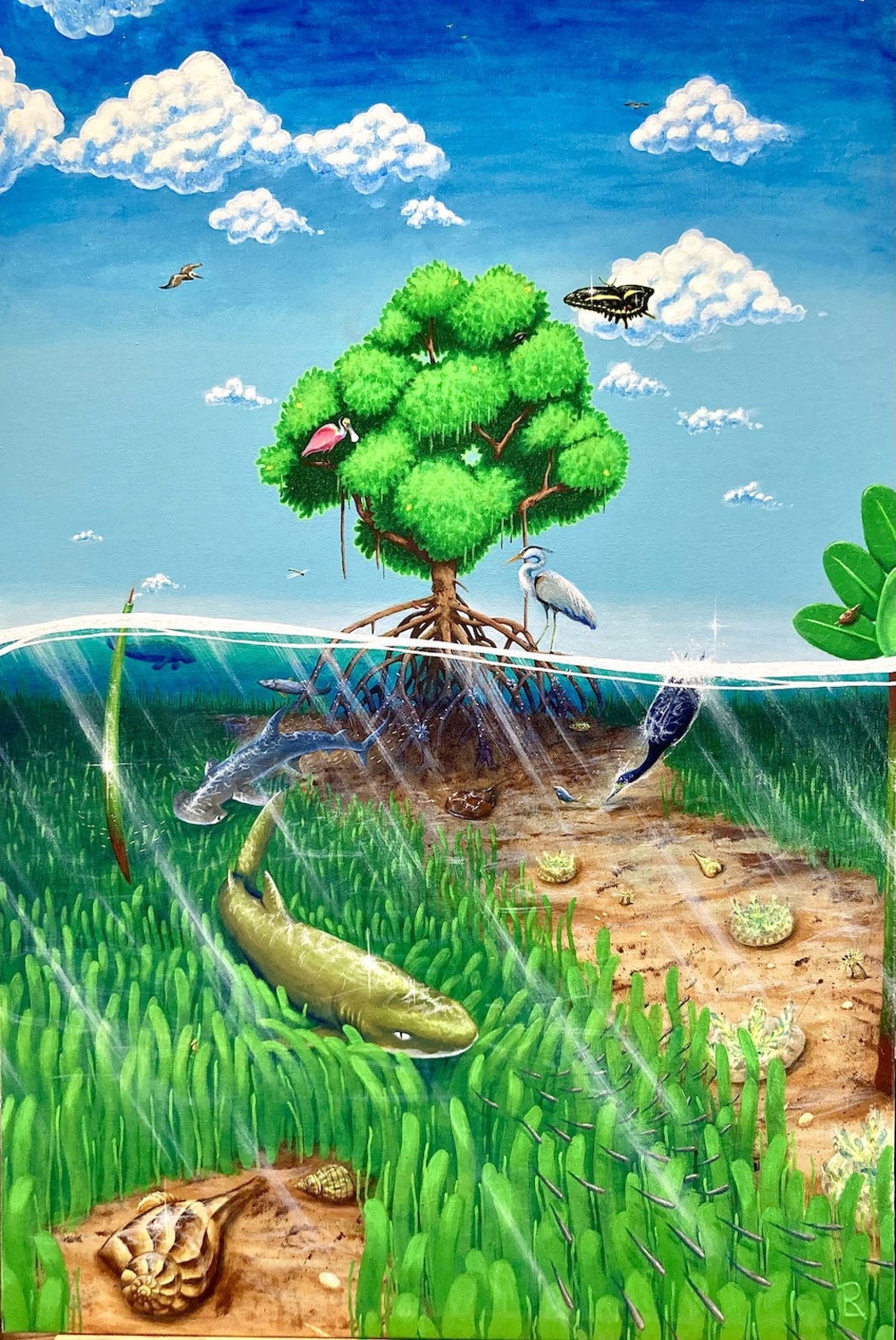 Rayna Loos | Tree of Life | 2024
Rayna Loos | Tree of Life | 2024
Do you have any advice for aspiring artists who are also passionate about science?
Never stop being curious and never stop creating! When it comes to art and science the possibilities are endless. It’s amazing how many of us there are out there and how many scientists are looking for artists like us to bridge the gap between art and science. Use your creativity and critical thinking skills to discover new ways to combine art and science. If you work as a scientist and spend time out in the field, the subject for your next painting might be out there. I work as an Eco-Tour Guide which means I spend a lot of time outside and I take a lot of pictures at work to use for future paintings. If you work as a wildlife artist, find ways to get involved in science like volunteering or doing citizen science and you may learn more about the subjects you are so inspired by. I volunteer at a lab so I can learn more about marine mammals and have utilized my artistic skills while volunteering and have created art for members of the lab.

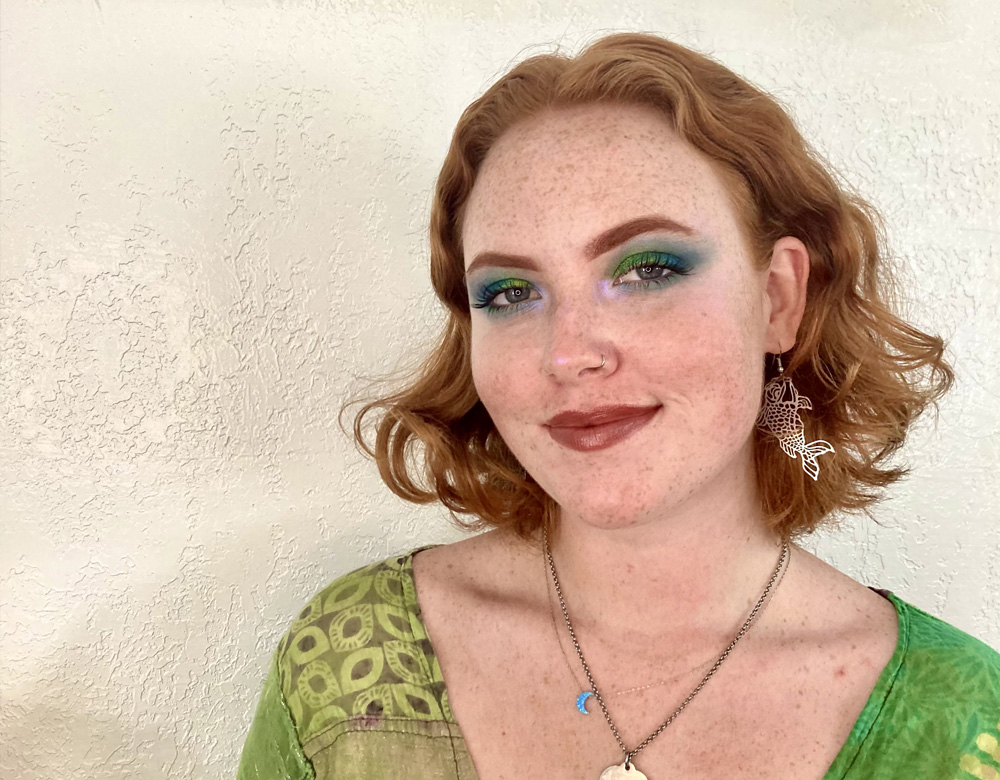
Leave a Reply
You must be logged in to post a comment.